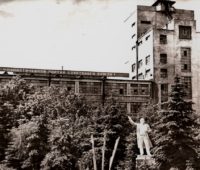The intertwined dynamics of urban “revitalization” and the displacement and destabilization of African Americans in US cities is not a phenomenon new to twenty-first century New York City. Amanda Boston’s examination of the “redevelopment” of Downtown Brooklyn exposes the changing roles of government and the market in the erasure and destabilization of long-standing communities of color. As municipal government has moved from market regulator to market facilitator—inviting the influx of global capital and gentrification into majority-minority neighborhoods—the impact on the space has benefited the affluent (often white) residents and consumers of the city to the detriment of minority communities. A consideration of the construction of the Barclay’s Center in Brooklyn provides a close-to-home lens on the role of race and profit in the organization of urban space.


























